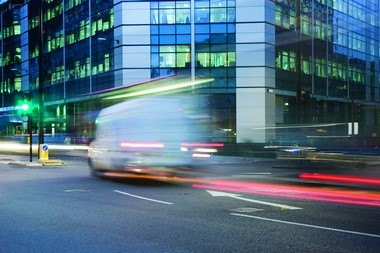Lets work together



Suite 3A, Chapel Allerton House, 114 Harrogate Road, Leeds, LS7 4NY
ukinfo@integrated-skills.com
+44 (0) 3300 888 670

The movement of goods between a transport hub to a delivery address, commonly known as ‘The Last Mile’, is becoming increasingly competitive and innovative. What more does the Barclays Bank report reveal about the potential technology?
Delivered in September 2014, this report looked at online purchasing and attempted to predict how existing trends at that time would pan out over the next few year until 2018. We are not looking at how successful the predictions were but rather at how they would impact on the technology relevant to Last Mile logistics.
Consumer demand will drive the Last Mile technology
The authors identified a growing demand by consumers for greater choice in home delivery options. They also noted that companies offering multiple delivery options were differentiating themselves by so doing.
Of the six takeaway points, one focused on technology emphasising the need to deliver a flexible service that is reflective of a consumers’ preference using technology to achieve it
The report quotes Tim Jones, Director of Marketing at delivery company DPD, who predicted that technological developments will be the pathway for creating innovative services, and consumers will want “more specific delivery information with more options, including inflight options and alternative pick-up points.”
Logistics providers
This group had an extremely positive outlook with 92% expecting business to expand over the period. They appear to be comfortable with existing technology and see enhancing their existing solutions as the route to greater efficiency in the delivery element of the supply chain, as well as keeping the consumers of their retail clients happy.
In contrast to retailers, when referencing operational efficiency, systems and technology issues are less of a concern for logistics providers with just over 12% citing this as a problem area. They view technology as a means to improve customer service, though functions such as messaging services to assist consumers in managing deliveries around their normal daily schedule. Below illustrates what initiatives logistics firms were considering at that time, showing the number of respondents who identified with each one:
Retailers
The report stated that over 50% of retailers believe that delivery services have benefited their sales figures but many report a negative impact on profits, with higher costs incurred. The authors recommend that bricks-and-mortar retailers invest in technology that would provide a single-stock view of a product across all locations, despite the cost, as they feel that this technology can drive out greater efficiencies and reduce costs associated with delivery services in the long term.
How the information service of consumer delivery has developed
Rather than look at the technology, it is more telling to look at the consumer experience as a use case. Not that long ago, the customer was lucky if delivery was achieved within the stated timeframe of 7 days, for example. That was bare bones service – just the delivery function with no customer interaction whatsoever. Tracking codes were added, which provided a little visibility and an illusion of better service, somehow. Nowadays, Uber style real time route tracking on a smartphone tells the consumer almost to the minute when to expect delivery.
Negative use cases
It used to be the case that the most costly experience for the delivery company was a customer not at home at the expected time. The process was for the driver to write a card, pop it through the letterbox, put the package back in the truck and process it back into a local hub where the consumer could request another delivery attempt or come and collect it. That is an expensive process.
Technology mentioned in the report now enables the driver to deposit the package in some seemingly secure location on the premises (e.g. behind the green wheelie bin), take a photograph of it in situ as proof of delivery, and send the photo with a brief note to the consumer, or leave the package with a neighbour, corner shop or at a secure locker nearby.
2018 and beyond
Last Mile systems and will continue to develop, using the latest technology, to provide an even wider range of delivery choices for the consumer while increasing the process efficiency to reduce costs. Nothing new there then! So listen for the sound of a drone nearby…!
Would you like to know more about The Last Mile – The Barclays Report? Fill in your details below and let us know how we can help.
Website Designed & Built by we are CODA